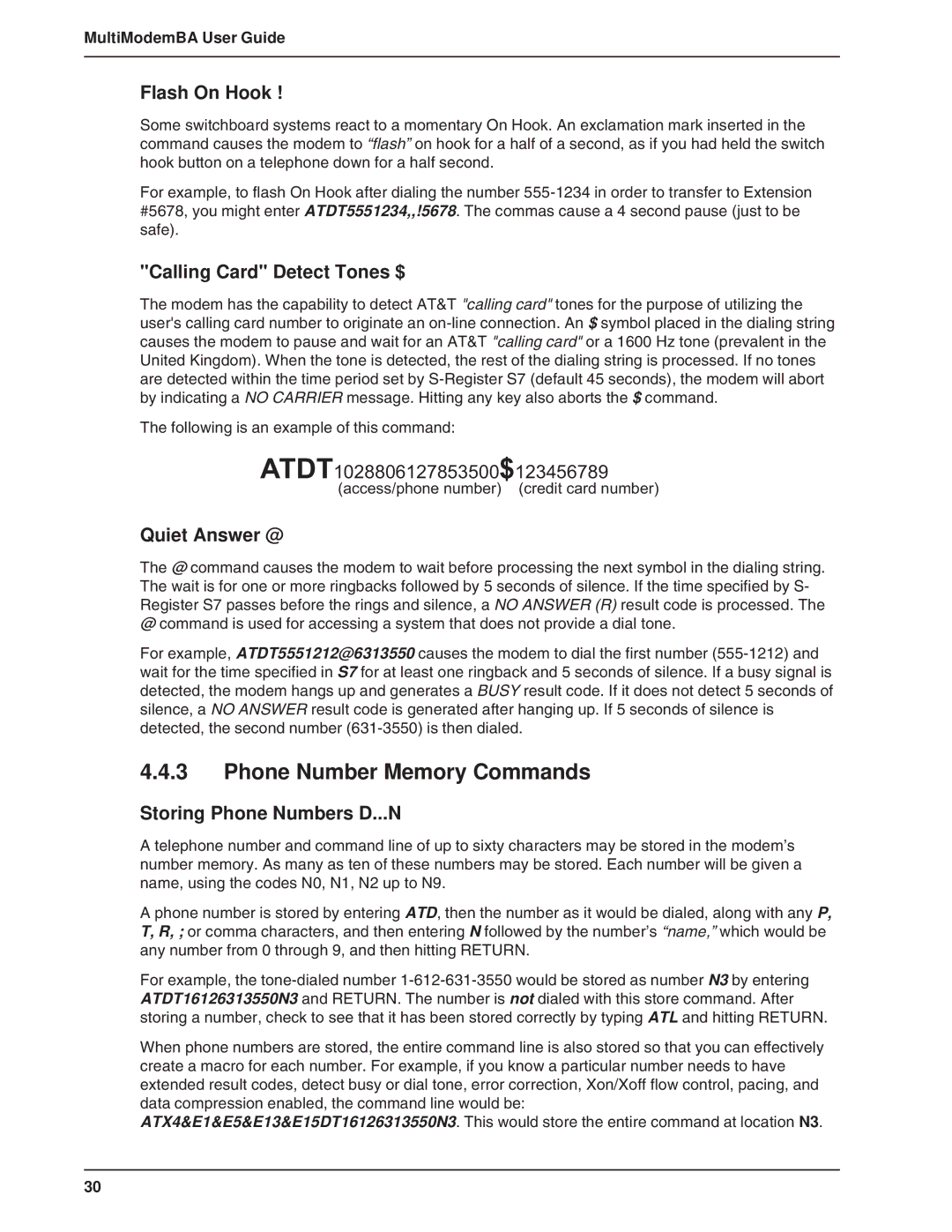
MultiModemBA User Guide
Flash On Hook !
Some switchboard systems react to a momentary On Hook. An exclamation mark inserted in the command causes the modem to “flash” on hook for a half of a second, as if you had held the switch hook button on a telephone down for a half second.
For example, to flash On Hook after dialing the number
"Calling Card" Detect Tones $
The modem has the capability to detect AT&T "calling card" tones for the purpose of utilizing the user's calling card number to originate an
The following is an example of this command:
ATDT1028806127853500$123456789
(access/phone number) (credit card number)
Quiet Answer @
The @ command causes the modem to wait before processing the next symbol in the dialing string. The wait is for one or more ringbacks followed by 5 seconds of silence. If the time specified by S- Register S7 passes before the rings and silence, a NO ANSWER (R) result code is processed. The
@command is used for accessing a system that does not provide a dial tone.
For example, ATDT5551212@6313550 causes the modem to dial the first number
4.4.3Phone Number Memory Commands
Storing Phone Numbers D...N
A telephone number and command line of up to sixty characters may be stored in the modem’s number memory. As many as ten of these numbers may be stored. Each number will be given a name, using the codes N0, N1, N2 up to N9.
A phone number is stored by entering ATD, then the number as it would be dialed, along with any P, T, R, ; or comma characters, and then entering N followed by the number’s “name,” which would be any number from 0 through 9, and then hitting RETURN.
For example, the
When phone numbers are stored, the entire command line is also stored so that you can effectively create a macro for each number. For example, if you know a particular number needs to have extended result codes, detect busy or dial tone, error correction, Xon/Xoff flow control, pacing, and data compression enabled, the command line would be: ATX4&E1&E5&E13&E15DT16126313550N3. This would store the entire command at location N3.
30
